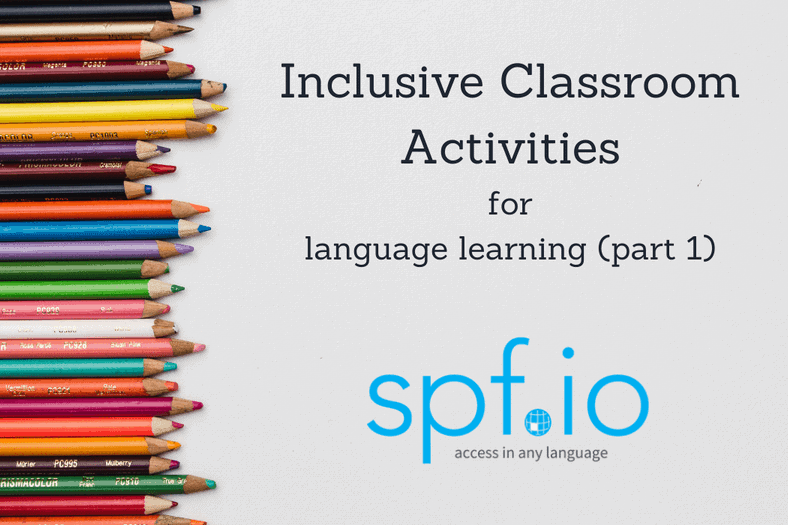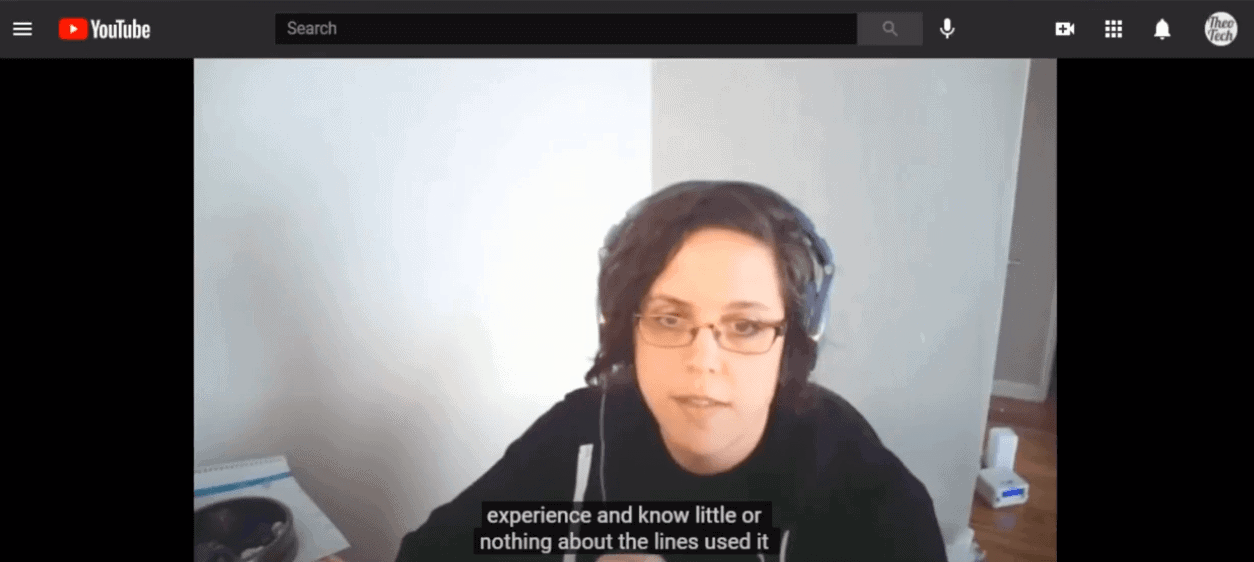This article is part of a series on inclusive classroom examples and activities to use with language learners
(read more about inclusive classrooms here).
Inclusive classroom teachers face a number of challenges, this article covers 3 challenges and potential activities and strategies to address them.
3 challenges with inclusion in the language learning classroom
1. Languages are complicated!
Language learning teachers teach vocabulary, parts of speech, sentence structure, reading comprehension, context clues, and more. All of this helps students become proficient in SWIRL: speaking, writing, (interacting), reading, and listening.
For example, why are parts of speech important? We all know how frustrating it can be to learn the verbs, nouns, and adjectives of another language. When we want to create sentences, we need to select the right parts to put them together. Otherwise, it’s like putting together a car with all the wrong parts. Who would want to drive a car with 3 steering wheels, 2 brake pedals, and no doors?
Learning the fundamental parts of language is the basis of good writing. It helps students recognize why sentences are incomplete, what words to use to connect sentences (conjunctions), and more. Understanding different types of words can help students become better writers as they master the art of sentence construction.
2. Inclusive classroom management is hard
Language teachers must handle students with different levels of proficiency within a single classroom. Some students might mostly speak the language but not practice writing much outside of the classroom. Others can barely have a grasp of even the most common words. How can a teacher handle such a diverse classroom?
Successful teaching requires a great deal of creativity, resourcefulness, and adaptation. Keeping students engaged, on-task, and interested is a challenge, and teachers can only plan for so much. Creating multilevel lesson plans where students can feel successful is key to learning motivation. At the same time, it is worth noting that good inclusive classroom examples balance instructor effort with strategies like peer tutoring and group learning.
3. Teaching to the whole student can be challenging
Learning a new language is hard. Meeting students’ emotional needs is fundamental to increase their motivation and success in language learning (Horwitz 1995). Factors like language anxiety and pre-existing beliefs about language learning play a role in whether a student is emotionally primed to effectively learn. For instance, many students feel intimidated and experience language anxiety when speaking in front of a classroom. Additionally, when students expect that learning languages is hard and boring, they will be less motivated to engage in class activities. With these examples, asking students to do too much, too fast leads to frustration and problematic classroom management.
For an effective and inclusive learning environment, students need to feel some level of control. They also need ways to decrease anxiety. This can come in the form of choosing their own activities or options with different levels of difficulty.
3 creative ways to enhance language learning exercises
Keep it simple with captions.
What’s an easy way to engage students at multiple levels? Use captions with videos and social media clips!
Captions help language learners and students with disabilities. Language learners benefit from seeing written words and recognizing new terms as they are spoken. Captions also let students make connections between reading, writing, listening, and speaking, especially when used with active learning exercises like cloze (fill-in-the-blank) handouts.
Students may have disabilities that include auditory, cognitive, and neurological differences. Captions make it easier to support these students, making videos, presentations, and other audible multimedia accessible. They also help students with different learning styles by providing different ways to engage with the material.
Captions are additionally beneficial to students without disabilities – people often notice and retain more content than they would have without captions. For example, captions can assist students with challenging vocabulary, increasing their focus and engagement with the material. In fact an Oregon State University study found that 90% of all students found captions moderately, very, or extremely helpful (Dello Stritto and Linder 2017).
TIP: Learn how to turn any video clip into a language learning lesson here – get captions for any downloadable video you want!
More inclusive classroom examples
Read the next article for two more inclusive classroom examples!
References:
Cohan, A., Honigsfeld, A., & Dove, M. (2019). Team Up, Speak Up, Fire Up! Educators, Students, and the Community Working Together to Support English Learners. https://eric.ed.gov/
Dello Stritto, M.E. & Linder, K. (2017). A Rising Tide: How Closed Captions Can Benefit All Students. EDUCAUSE Review Online. http://er.educause.edu/


